Manduca dilucida
Manduca dilucida
(H. Edwards, 1887)
Protoparce
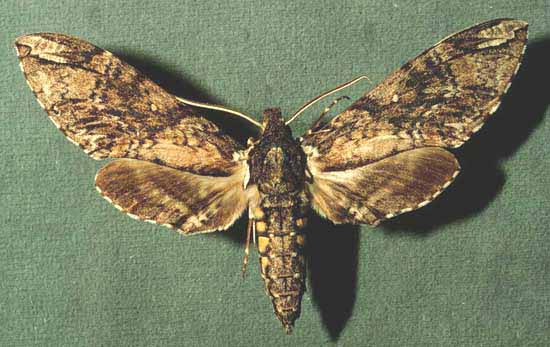
Manduca dilucida male courtesy of Dan Janzen.
This site has been created by
Bill Oehlke at oehlkew@islandtelecom.com
Comments, suggestions and/or additional information are welcomed by Bill.
TAXONOMY:
Family: Sphingidae, Latreille, 1802
Subfamily: Sphinginae, Latreille, [1802]
Tribe: Sphingini, Latreille, 1802
Genus: Manduca Hubner, [1807] ...........
Species: dilucida (H. Edwards, 1887)
|
MIDI MUSIC
.....It's a Wonderful World.....
copyright C. Odenkirk
ON.OFF
<bgsound src="world.mid" LOOP=FOREVER>
|
DISTRIBUTION:
Manduca dilucida
(Wingspan 92(TS)-95-98 mm)
flies in
Mexico (specimen type locality);
Belize: Corozol, Orange walk, Cayo;
Guatemala: Peten (TS);
Nicaragua: Masaya, probably Carazo, Granada, Rivas;
Costa Rica: Guanacaste;
and possibly across northern South America to Venezuela.
FLIGHT TIMES:
Manduca dilucida adults have been taken in February and every month
from April until October in Costa Rica. There are probably three broods annually.
Terry Stoddard reports a June flight in Guatemala.
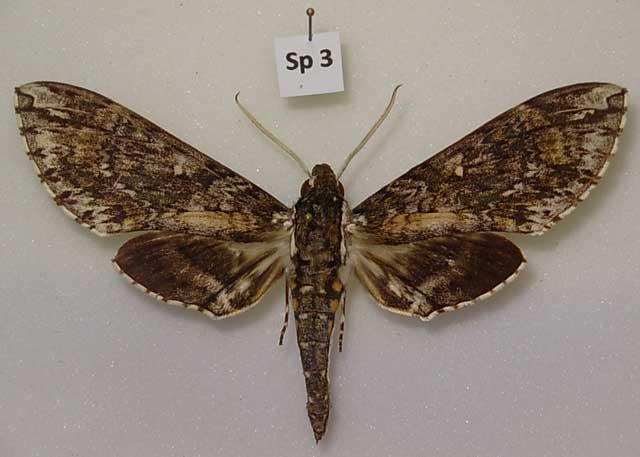
Manduca dilucida, Ixpanpajul, 5km S Santa Elena, Peten, Guatemala,
June 5, 2015, 200m, 92mm, courtesy of Terry Stoddard, id by Bill Oehlke.
ECLOSION:
Pupae probably wiggle to surface from subterranean chambers just prior to eclosion.
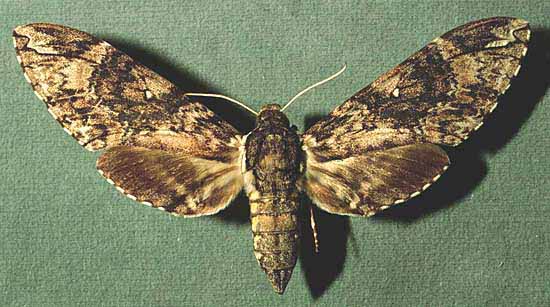
Manduca dilucida female courtesy of Dan Janzen.
SCENTING AND MATING:
Females call in the males with a pheromone released from a gland at the tip of the
abdomen. Adults take nectar from flowers.
EGGS, LARVAE, PUPAE:
Pale green, translucent eggs are deposited individually or in
small groups of three to five
on both upper and undersides of leaves. The first
instar larvae are pale green with black horn. | 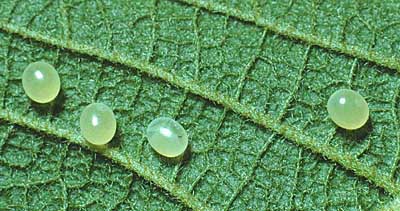 |
Larvae have several colour morphs, pass through five instars and feed on Annona reticulata, Annona holosericea
and Sapranthus palanga
of the Annonaceae family and on Amphilophilum paniculatum, Crescentia alata and Tabebuia ochracea
of the Bignoniaceae family and on Cordia alliodora of the Boraginaceae family and on Cornutia grandifolia
of the Verbenaceae family.
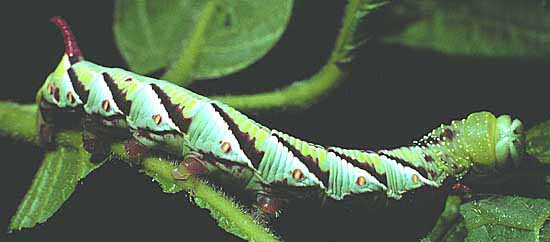
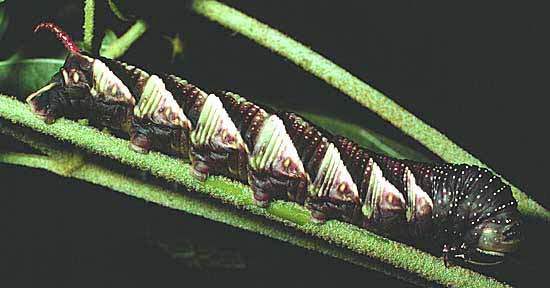
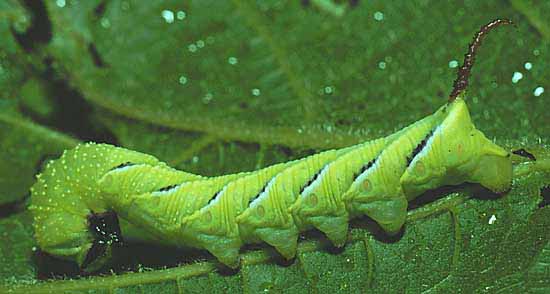
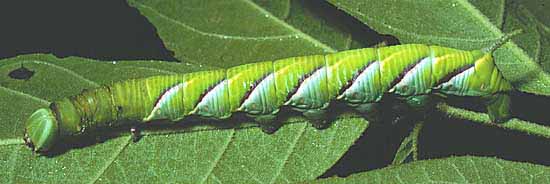
The larva lies on its back, in typical
Manduca fashion, while pupating. The pupa has a flat, short tongue cover. Moths usually eclose after two months of development, but
some pupae formed in June do not emerge until the following February. | 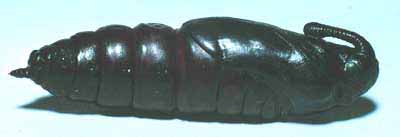 |
Larvae are highly subject to disease and to parasitization by Tricyphus respinozai and Tricyphus respinozai
of the Ichneumonidae family and by
Microplitis espinachi of the Braconidae family and by Belvosia sp. 6 and Drino rhoeo
of the Tachinidae family and by Euplectrus walteri of the Eulophidae family.
Use your browser "Back" button to return to the previous page.
Return to Sphingidae Index
Return to Sphingini Tribe
Use your browser "Back" button to return to the previous page.
This page is brought to you by
Bill Oehlke and the
WLSS. Pages are on space rented from Bizland. If you would like
to become a "Patron of the Sphingidae Site", contact Bill.
Please send sightings/images to Bill. I will do my best to respond to
requests for identification help.
Enjoy one of nature's wonderments: Live
Saturniidae (Giant Silkmoth) cocoons.
 | 
Show appreciation for this site by clicking on flashing butterfly to the left.
The link will take you to a page with links to many insect sites. |










